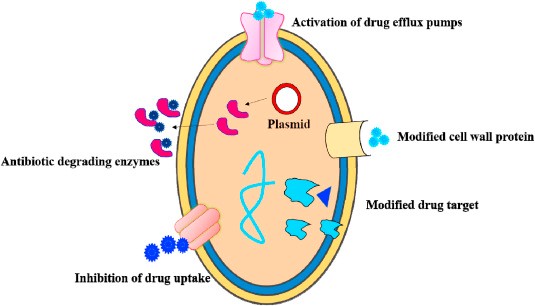Why has Google got a second antitrust fine? (GS Paper 3, Economy)

Why in news?
- Recently, the Competition Commission of India (CCI) imposed a fine of ₹936.44 crore on the tech major for anti-competitive practices in its Play Store policies.
- Earlier, the CCI had imposed a provisional fine of ₹1,337.76 crore on the company for abusing its dominant position in multiple markets in the Android mobile device ecosystem.
Why has Google been fined for a second time?
- The new fine by the CCI pertains to one of the three antitrust lawsuits Google is facing in India.
Google Play Store:
- The Google Play Store is a marketplace for apps and services and has a collection of more than three million applications.
- The investigation into Google’s payment system used in the Play Store began in 2020 after an individual complainant, whose identity has been kept confidential, filed an antitrust case against Google.
- Indian startups and small digital companies have complained about Google’s policy of imposing the use of its own payment system on app developers.
- Similar probes are also on against Google in South Korea and Indonesia.
- A European court recently upheld a 2018 ruling against Google saying that the company imposed “unlawful restrictions on manufacturers of Android mobile devices.” Google faces a $4.1 billion fine and plans to appeal.
Current matter:
- In the current matter involving Google, the CCI examined if the company violated the Competition Act through its policy of requiring app developers to mandatorily use Google Play’s billing system (GPBS) not only for receiving payments for paid app downloads but also for in-app purchases.
- The CCI thus concluded that making access to the Play Store contingent on mandatory usage of GPBS was “one-sided and arbitrary” and it also denied app developers “the inherent choice to use payment processors of their liking from the open market.”
Service fee:
- It also examined the service fee that Google charges developers of paid apps and for in-app purchases. Compared to the 0-3% fee by other payment aggregators in India, the Commission found Google’s service fee (between 15-30%) to be excessive, unfair, and discriminatory.
- Google submitted that only 3% of developers on Google Play are subjected to a service fee. However, the commission found that the services provided by Google to these developers are in no way different or additional compared to services provided to developers of free apps.
- Further, it found that Google does not make it mandatory for some of its own apps like YouTube to use the GPBS, exempting them from paying the service fee. Besides, the Commission said that Google excluded rival UPI apps as effective payment options on the Play Store.
- It was discriminatory of Google to use an easy and efficient payment flow for its own UPI application GPay, while using a more cumbersome system with a lower success rate for other UPI apps like Paytm, PhonePe etc.
What are some of the key findings?
- The current investigation found that in the market for licensable Operating Systems (OS), Google enjoys a dominant position. OS are complex software products needed to run applications and programs on smartphones.
- Android, which is the most prominent such OS, was acquired by Google in 2005. Android is a licensable OS, meaning the developer Google licenses it to smartphone manufacturers like Samsung, Vivo, and so on.
- About 97% of India’s 600 million smartphones are powered by Google’s Android OS. While Android is an in-principle open-source OS, the CCI found that it is controlled by Google.
- Through its restrictive agreements with smartphone manufacturers, Google made sure that manufacturers who wished to use its proprietary apps such as Chrome, Play Store, YouTube and so on had to use Google’s version of Android.
- The order noted that the Play Store, which is a part of the Google Suite (Chrome, Gmail, YouTube etc.) comes pre-installed in 100% of Android OS devices and owing to the mandatory pre-installation and entry barriers in the market, users did not have the option of side-loading or downloading apps outside of the Play Store.
How has Google reacted?
- While Google had ₹1,300 crore fine a “major setback” for its Indian operations, it defended itself after the second penalty by saying that “Indian developers have benefited from tech, security, consumer protections & unrivalled choice & flexibility that Android & Google Play provide”.
- It added that its low-cost model had powered India’s “digital transformation” and expanded “access for hundreds of millions of Indians”.
- It was reported that Google is also planning a legal challenge in response to the first antitrust ruling by the CCI.
A new target found to combat AMR Salmonella
(GS Paper 3, Science and Tech)
Why in news?
- Recent studies have reported the emergence of multi-drug resistant (MDR) phenotype in Salmonella tphimurium DT104, which causes infection in humans and cattle.
Details:
- The rapid and unselective use of traditional antibiotics gives rise to the emergence of drug resistant phenotype in typhoidal and non-typhoidal Salmonella serovars, which has increased the difficulties in curing Salmonella-induced food-borne illnesses (majorly typhoid or paratyphoid fever, gastroenteritis, and diarrhoea) worldwide.
- Salmonella typhimurium ST313, an invasive non-typhoidal Salmonella serovar, causes bloodstream infection in the malnourished and immunocompromised population of sub-Saharan Africa.
Why it is essential to study the effect of new drugs and find their potential targets in Salmonella in detail?
- The MDR phenotype in this pathogen was provided by Salmonella Genomic Island-1 (SGI-1), which confers protection against a wide range of antibiotics, including ampicillin (pse-1), chloramphenicol/florfenicol (floR), streptomycin/spectinomycin (aadA2), sulphonamides (sul1), and tetracycline (tetG) (ACSSuT).
- Further emergence of extensively drug-resistant (XDR) S. Typhimurium ST313 (having multi-drug resistant (MDR) and resistance against extended-spectrum beta-lactamase and azithromycin) in Africa posed a significant threat to global health.
- Recent studies reported an annual incidence of as many as 360 cases of typhoid fever per 1,00,000 people, with an annual estimate of 4.5 million cases and 8,930 deaths (0.2% fatality rate) in India.
- The continuous adaptation of this bacteria to the available antibiotics creates a risk of developing antimicrobial resistance in the future.

Recent research:
- A recent study showed that outer membrane porins of Salmonella Typhimurium play an essential role in the survival of the bacteria in the presence of antibiotics.
- In this study, they showed that deleting outer membrane protein A (OmpA) from Salmonella hampered its survival in the presence of two β-lactam drugs — ceftazidime and meropenem.
- OmpA is one of the most abundant barrel-shaped porin proteins localised in the outer membrane of Salmonella.
Absence of OmpA:
- The absence of OmpA in Salmonella hampers the stability of the bacterial outer membrane and reduces the expression of efflux pump genes.
- The study further showed that the outer membrane protein A could restrict the entry of antibiotics into the bacteria, thus improving the survival of the pathogen under antibiotic treatment.
- Removing OmpA resulted in a greater intake of ceftazidime and meropenem, which ultimately killed the mutant bacteria by disrupting its outer envelope.
- Most importantly, this study showed that disruption of OmpA can also effectively reduce the antibiotic-resistant persister population of Salmonella.
- Administration of ceftazidime in mice infected with the OmpA-deleted strain of Salmonella cured the infection and proved that OmpA plays a crucial role in antimicrobial resistance.
Way Forward:
- The strategy to target outer membrane protein A (OmpA) of Salmonella can also be used to develop novel antimicrobials for other pathogens that can effectively reduce the risk of antimicrobial resistance (AMR) in the future.
Doctrine of Pleasure
(GS Paper 2, Governance)
Context:
- Kerala Governor Arif Mohammed Khan and the State government have major differences over multiple issues. The latest controversy has arisen after he sought the resignation of several vice-chancellors following a Supreme Court judgment setting aside the appointment of the Vice-Chancellor of a technology university.
- As a fallout of comments made by the State’s Finance Minister, the Governor has also sought his dismissal from his Cabinet, declaring that he has withdrawn the pleasure of having him in the Council of Ministers.
What is the concept of pleasure doctrine?
- The pleasure doctrine is a concept derived from English common law, under which the crown can dispense with the services of anyone in its employ at any time.
- In India, Article 310 of the Constitution says every person in the defence or civil service of the Union holds office during the pleasure of the President, and every member of the civil service in the States holds office during the pleasure of the Governor.
- However, Article 311 imposes restrictions on the removal of a civil servant. It provides for civil servants being given a reasonable opportunity for a hearing on the charges against them.
- There is also a provision to dispense with the inquiry if it is not practicable to hold one, or if it is not expedient to do so in the interest of national security.
- In practical terms, the pleasure of the President referred to here is that of the Union government, and the Governor’s pleasure is that of the State government.
Can the Governor use it?
- Under Article 164, the Chief Minister is appointed by the Governor; and the other Ministers are appointed by the Governor on the CM’s advice.
- It adds that Ministers hold office during the pleasure of the Governor.
- In a constitutional scheme in which they are appointed solely on the CM’s advice, the ‘pleasure’ referred to is also taken to mean the right of the Chief Minister to dismiss a Minister, and not that of the Governor. In short, the Governor of an Indian State cannot remove a Minister on his own.

What did the Supreme Court say on one Vice-Chancellor’s appointment?
- In a case challenging the appointment of Dr. M.S. Rajasree as V-C of the APJ Abdul Kalam Technological University, Thiruvananthapuram, the Supreme Court held that her appointment was contrary to the regulations of the University Grants Commission (UGC).
- The particular infirmity was that the Search Committee had identified only one candidate and recommended the name to the Chancellor for appointment.
- Under UGC regulations, a panel of three to five names should be recommended so that the Chancellor has a number of options to choose from.
- The court rejected the State government’s argument that it had not specifically adopted the UGC regulations, holding that the regulations framed under a Central law will override the State government’s relevant rules.
How did the Governor react?
- The Governor, in his capacity as Chancellor of universities, responded by directing the V-Cs of nine universities to resign the very next day, contending that the infirmities pointed out by the Supreme Court in one case also vitiated their appointments.
- He noted that the apex court had declared that an appointment not in line with the UGC regulations would be ab initio void that is invalid from the very beginning.
- He highlighted the fact that each of those appointments were either made on the basis of a single recommendation or were recommended by a panel in which the Chief Secretary was a member (contrary to the Regulations that say its members should be persons of eminence in the field of higher education).
- However, when the communication was challenged in the Kerala High Court, the Governor converted his directive into show-cause notices to the V-Cs to explain how their appointments were not illegal. Later, such notices were sent to two more V-Cs.




